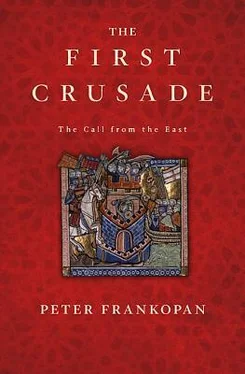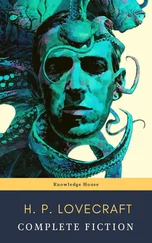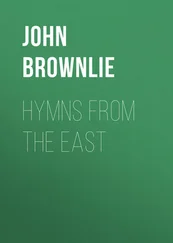While the capture of Jerusalem reverberated around Europe, its local impact was no less profound. The city had been home to Muslims, Jews and indeed Christians for centuries, producing and exporting olive oil, fragrances, marble and glass around the Mediterranean. It was an important pilgrimage centre for Islam as well; according to one eleventh-century visitor, many thousands of Muslim pilgrims came to Jerusalem as it was a much easier destination for them to reach than Mecca. 27
The Christian conquest dramatically altered the social, ethnic and economic structure of the city. Muslims fled Jerusalem and other towns and locations in Palestine and left behind everything that they could not carry. 28As a result, the production of oils, ceramics, fruit preserves and other goods for which this region was famous came to a standstill. Yet in addition to resuming economic production, there was also the need to establish new links to replace the web of largely Muslim networks that dominated trade to and from the Levant. Genoese and Venetian merchants were only too willing to step in and negotiated highly favourable terms for themselves. In return for supplying the new Crusader colonies, the Italian city-states were granted quarters and extensive properties in the main cities on the eastern seaboard of the Mediterranean, notably Antioch, Jerusalem and eventually Tyre, the main port for the Holy City. 29
The first priority, however, was to secure lasting control of the Holy City. The Crusaders had received envoys from the Fatimids of Cairo as they made their way south in the spring of 1099 proposing an alliance against the Sunni Turks. 30Although this was not rebuffed outright, the Fatimids had drawn their own conclusions as the Crusader force marched on Jerusalem. A very substantial army under the command of the vizier al-Afdal had already been dispatched and was on its way north by the time the Crusaders reached the Holy City, and it arrived at the beginning of August. On 10 August, the knights rode out from Jerusalem and met the enemy near Ascalon, catching the Fatimid army by surprise. In the panic that ensued, many tried to hide in the trees, only to be shot like birds by arrows or speared with the knights’ lances. Yet again, the discipline of the knights brought about an unlikely victory against vastly superior numbers, scattering al-Afdal’s force and driving it back within the walls of Ascalon from where the demoralised survivors soon set sail for home. 31
Despite the success, the first stages of Crusader settlement were precarious, with Muslim forces putting almost constant pressure on the towns that had been captured in 1098–9. To try to alleviate the situation, urgent appeals for help from Europe were issued by the Crusade leadership. In the spring of 1100, Archbishop Daimbert of Pisa, sent east by the Pope as his representative after the death of the bishop of Le Puy, wrote to ‘all the archbishops, bishops, princes and all Catholics in the Germanic region’, begging them to send reinforcements to the Holy Land to help the Christians hold on to the towns and territories they had taken. 32
The appeals fell on fertile ground, with many in Europe enthralled by news of the capture of Jerusalem and the exploits of those who had taken part in the expedition. The fact that the heroes who had captured the Holy City were now badly exposed inspired a new wave of armed men to set out for Jerusalem in 1100. Contingents from Lombardy, Burgundy, Aquitaine and Austria reached Byzantium by the spring of the following year, together with several knights – such as Hugh of Vermandois and Stephen of Blois – who had taken part in the original campaign but had returned home without reaching Jerusalem.
Determined to emulate the deeds of their peers, the new Crusaders gathered near Nikomedia in the early summer of 1101. Ignoring the advice of Emperor Alexios to take the most direct route across Asia Minor, they instead headed into the heart of Turkish-held territory. When they reached Mersivan in Paphlagonia, they were attacked by Kilidj Arslan at the head of a massive Turkish army and all but annihilated. The few survivors, including Raymond of Toulouse, who was escorting the fresh force to Jerusalem, returned to Constantinople. The attempt to strengthen the Christian position in the east had been a fiasco. 33
The chronic vulnerability of the Crusaders in the Holy Land was underlined by the death of Godfrey in the summer of 1100, almost a year to the day since the fall of Jerusalem. 34Around the same time, Bohemond was captured on the battlefield near Melitene by a Turkish emir. 35This deprived the westerners of some of their senior and most respected figures, and further weakened the Crusaders’ ability to withstand the assaults of their Muslim neighbours.
The turbulence was made worse by the ambitions of Tancred, who quickly assumed his uncle Bohemond’s mantle in Antioch, and of Daimbert of Pisa, who had managed to have himself declared patriarch of Jerusalem after his arrival in the east. 36Seeing the power vacuum that emerged after Godfrey’s death and Bohemond’s capture, the two men attempted to take control of Jerusalem for themselves. This met with opposition from an important faction within the Holy City, who sent a delegation to Baldwin in Edessa, asking him to come urgently to take his brother’s place. 37
Historians have traditionally paid little attention to the motivations for the call to Edessa, but the appeal to Baldwin was significant because it was also aimed at repairing relations with Alexios. Although the Crusaders had seen off the Muslims at Ascalon, the pressure on the new settlements was chronic. There were also severe problems with supply. The arrival of fleets from Pisa, Genoa and Venice promised the opening of new routes to the Christian east, but there was still the more significant problem of ensuring that the supply links from Cyprus and the ports of southern Asia Minor, which were in Byzantine hands, were kept open in the aftermath of the conquest of Jerusalem. Baldwin, who had performed his duties as the emperor’s representative in Edessa effectively and reliably, was the obvious choice to help rebuild relations with Byzantium.
After appointing his kinsman, Baldwin of Le Bourg, to govern Edessa in his absence, Baldwin set off for Jerusalem. When he arrived, he worked tirelessly to outmanoeuvre the anti-Byzantine animosities that were rapidly rising in the city. Led by Daimbert and Tancred, this group had further antagonised the Byzantines by engineering the flight of John, patriarch of Antioch, to Constantinople in the summer of 1100 and appointing a Latin Church leader in his place. 38It was telling that when Baldwin reached Jerusalem in November, his arrival was greeted by cheering crowds made up not only of westerners but also of Greek and Syrian Christians. 39On Christmas Day 1100, Baldwin was crowned in Bethlehem, taking the title of king of Jerusalem; his elder brother had been buried at the entrance to the Holy Sepulchre. 40
Baldwin was keen to dampen anti-Byzantine sentiment and make peace with the emperor but tensions simmered in the city until the summer of 1101 when the troublesome Daimbert was suspended by a papal legate, who had been sent east following heavy lobbying of the Pope by Baldwin. 41Soon afterwards, Baldwin captured Jaffa, which provided the Crusaders with essential access to the sea. It was no co incidence that the town was placed in the hands of Odo Arpin of Bourges, a knight who was close to Alexios and was to become an important conduit for the emperor to central France in the early twelfth century: it was another positive step forward in relations with Byzantium. 42
By the spring of the following year, the need for Byzantine support had become even more urgent. In the summer of 1102, another huge Muslim army, which had been sent north from Cairo to prise the Crusaders out of Jerusalem, inflicted a massive blow on the westerners at Ramla, crushing a force led by Baldwin that was woefully unprepared and badly outnumbered. Although the king was lucky to escape, the weakness of his position was painfully exposed; with increasingly skeletal garrisons holding on to the towns still controlled by the Crusaders and manpower dwindling drastically following setbacks on the battlefield and the lack of reinforcements, the situation looked bleak. 43
Читать дальше











